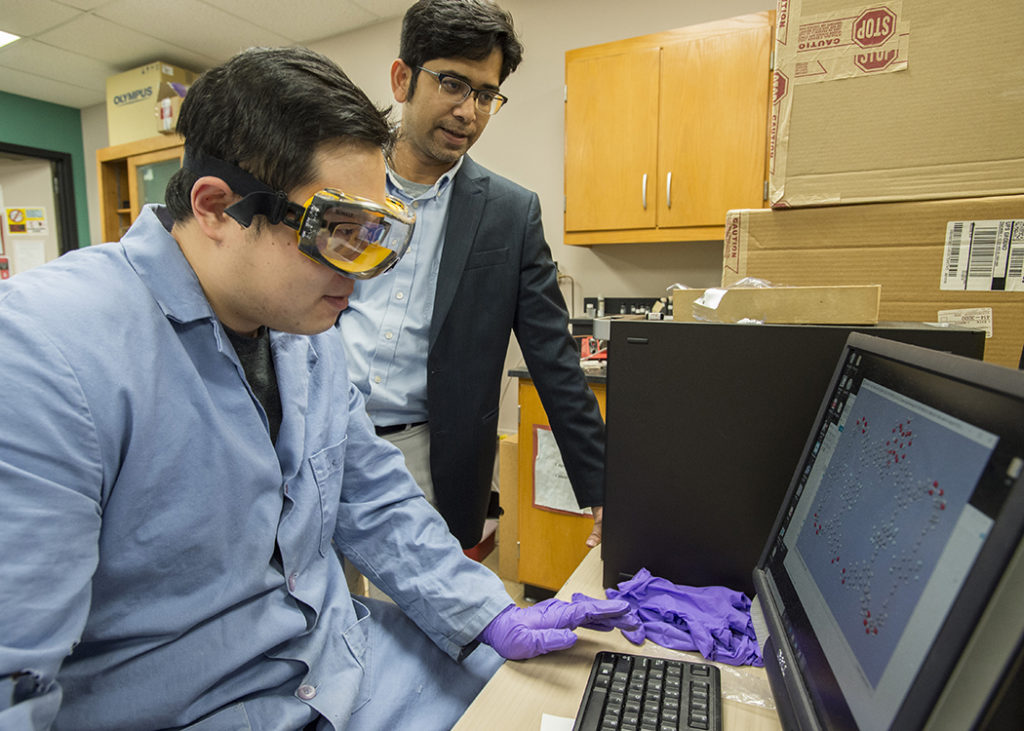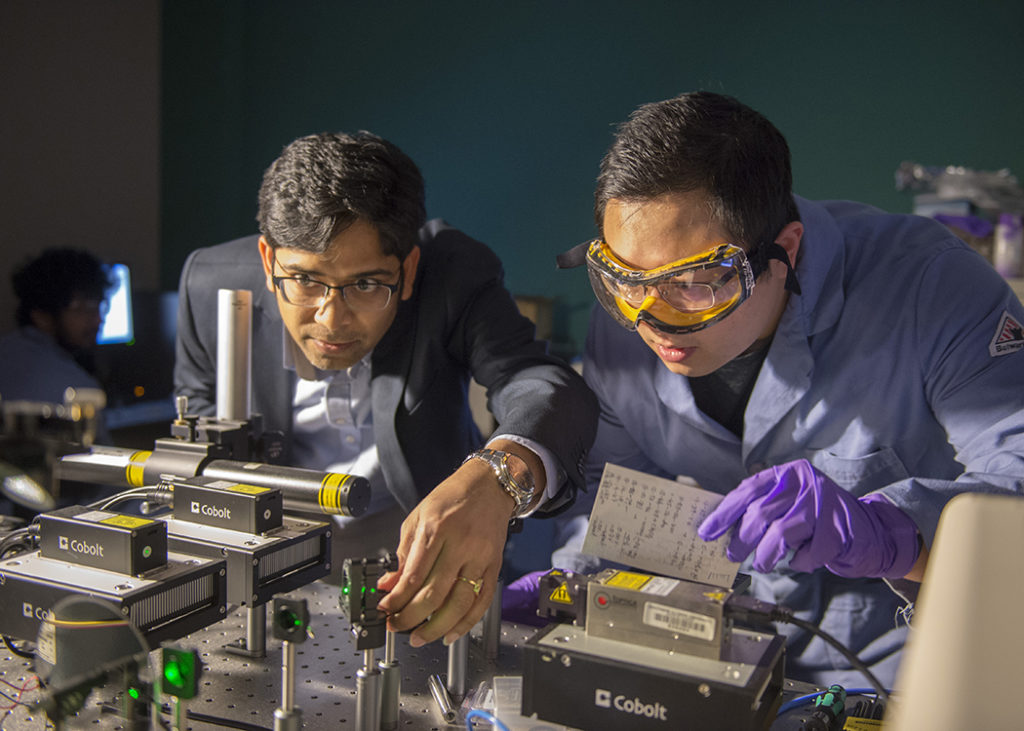Some look at a tree and see a lovely poem. Others, such as Pravas Deria, see in its leaves a perfect potential model for harnessing the sun’s energy.
The idea of capturing sunlight like plants is not new, but it remains super challenging because of the need for exacting synthetic designs. So Deria, assistant professor of chemistry and biochemistry at Southern Illinois University Carbondale, is working on the fundamental process of assembling tiny metal-organic structures that might accomplish this long sought goal.
Deria’s aim is to come up with framework compositions that can convert the sun’s energy into stored chemical energy. The metal structures will act as frameworks to hold organic pigments that have varying abilities to capture light.
The work also might lead to extremely efficient photovoltaic cells that use a process similar to photosynthesis in tree leaves.

National Science Foundation support
And the scientific community is paying attention. The National Science Foundation recently awarded Deria a prestigious five-year, $642,000 CAREER grant, also known as the Faculty Early Career Development Program. The program seeks to support early-career faculty who have the potential to serve as academic role models in research and education, and to lead advances in the mission of their department or organization.
Deria’s work will center on growing crystals made of both metal components and organic pigments to discover they’re varying light harvesting properties. The basic science work may help lead the way into a cleaner energy future, but it was inspired by nature itself.
“A leaf is like an antenna, and a group of them is like an array of antenna capturing light,” he said. “We’re inspired by the leaf and how it captures and transfers energy. We are looking at leaves – their exquisitely arranged pigments and structures – and how we might use those ideas.”
‘Harvesting’ light, the natural way
Solar energy comes in a wide spectrum, but nature has figured out how to capture exactly what it needs to power photosynthesis. This chemical-energy process fuels the life of much of earth’s green plants.
By investigating different materials and designs, using both metallic nodes to construct the framework with organic pigment, Deria hopes to find ways to mimic this successful approach to harnessing sunlight.
Once the light is harvested, the materials must be able to efficiently transport the energy to a “reaction center,” where it is then converted into charges and then to chemical energy or “solar fuel.”

Nature’s wonders
The mysteries of this natural process have intrigued Deria for years.
“Why does nature have this very precise, exquisite arrangement of the pigments? The answer is it wants to control exactly how much energy it absorbs,” Deria said.
The varying framework structure have pores of different geometry, like sponges, around which the pigments are arranged. But the compositions absorb light where the pores will allow chemical reaction to happen.
“Arrangement is the key. That’s how nature has evolved the green leaf. This precise arrangement of pigment is why we see it as green.”
Tiny scale, difficult work
The arrangement process is painstaking and takes place at the level of the super-tiny -in molecular level.

“Arranging pigments is literally painful,” Deria said, explaining that the work is done below the nanoscale and the molecular level, and is fantastically meticulous in nature.
But the clean energy research would be a fitting evolution at SIU, where a good portion of the fossil fuel research during the last part of the 1900s was conducted and is still conducted today, Deria said. The grant also involves paying graduate students and outreach to local high school students.
“We want to intrigue them,” he said.
Along with student salaries, the money from the grant also will pay for a scientific instrument that can measure how light excites the various framework compounds the researchers create.







